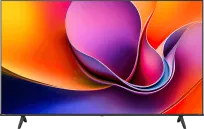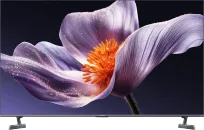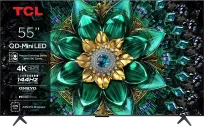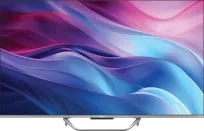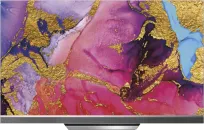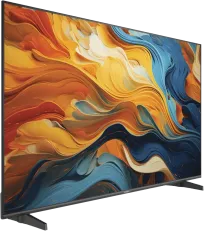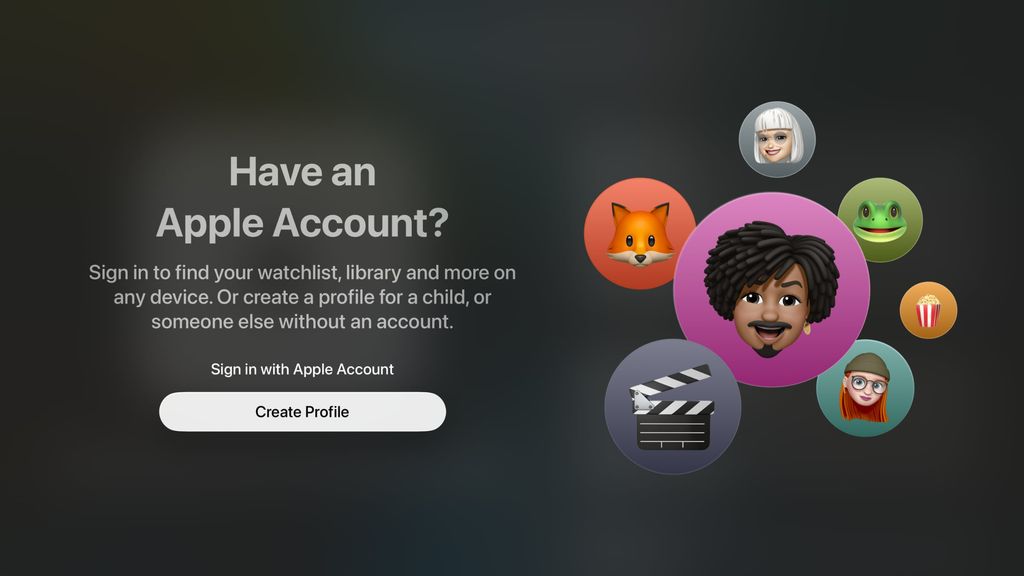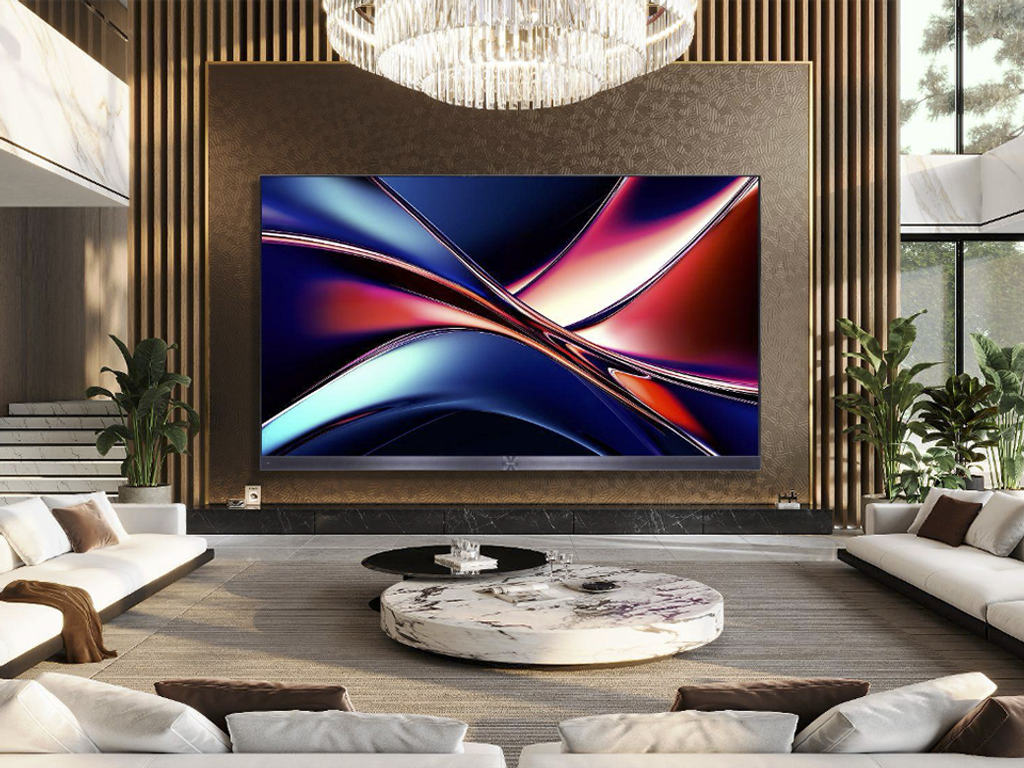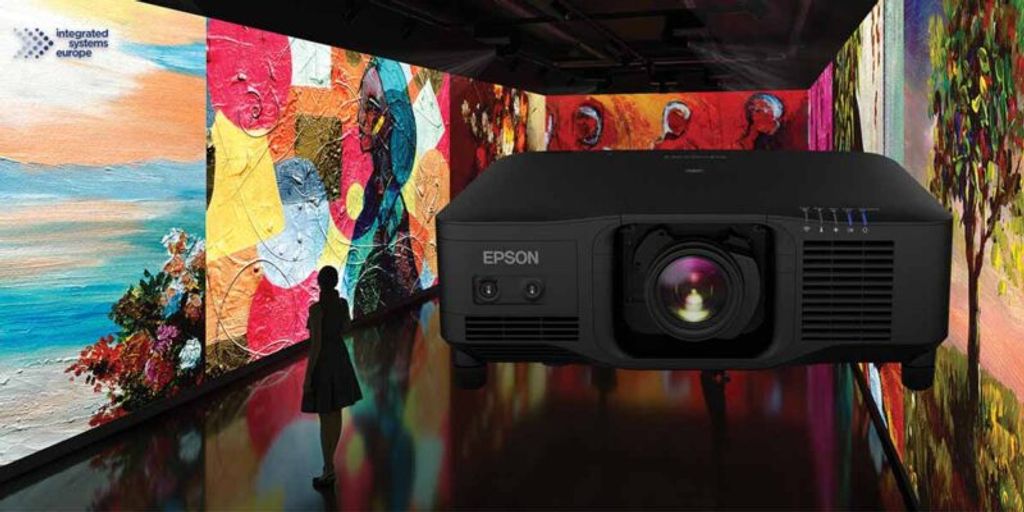
The first tests of the flagship Samsung QN990F TV – a wireless and matte screen in one! The first tests of Samsung's most advanced TV for 2025 – the QN990F – have appeared online. It is a direct successor to the QN900D model, which many considered a benchmark of quality among 8K TVs, although in practice it often performed worse than most high-end 4K models.
In the new flagship, we will find two major novelties:
A wireless One Connect Box, which means that only one almost invisible power supply leads to the screen.
A matte panel, which is a solution that Samsung has started to heavily promote in its top models – from the lifestyle The Frame, through OLEDs, to 8K TVs.
Do the novelties come with improved picture quality? What has changed compared to its predecessor and are we still talking about the most "loaded" LCD TV on the market? We review the first data and share our observations!
Another designer déjà vu




At first glance at the Samsung QN990F, we get the feeling that we've seen this somewhere before. And it's no wonder – this year's flagship almost entirely replicates the style of its predecessor. Is that bad? Absolutely not. In times when manufacturers are approaching changes in design with increasing caution, Samsung also opts for proven elegance. The minimalist, borderless design, the screen almost blending into the frame, and the characteristic, mirror-like base that gives the impression the television is floating above the furniture – all of this creates the impression of a true work of functional art.
However, the biggest novelty in this "already familiar" shape is the completely wireless One Connect module. We only connect power to the television, and connect all the rest – decoders, consoles, soundbars – to a separate box that can be discreetly hidden anywhere in the room. Sounds like a dream come true for aesthetics? Yes, but such luxury comes with a certain price and certain limitations – which we will discuss shortly.
Brighter than ever – but not without compromises
If we were to point out the biggest improvement compared to last year's QN900D model, it would be brightness. According to measurements by the Rtings, the new QN990F can, under ideal conditions, break the 2000 nit barrier, making it one of the brightest, if not the brightest, 8K resolution televisions. This is a result about 500 nits better than its predecessor, which we tested for you last year.
Unfortunately, as is often the case this year, there were some compromises. With higher brightness comes a slight deterioration in contrast. It is not a change that is immediately noticeable, but a trained eye will discern that the depth of black and light separation have somewhat suffered compared to the QN900D.
What is happening with tone transitions in 2025?
Another noticeable deterioration compared to its predecessor is unfortunately the quality of tone transitions. Honestly? We don't know what the manufacturers are doing with this aspect this year. First LG with problems in the G5 and C5 models, and now – unfortunately – also Samsung.
In the case of the QN990F, the biggest difficulties arise with transitions from light to dark tones, especially on gray gradients transitioning to white. There is noticeable banding that spoils the impression of natural gradation and can be seen in more demanding scenes, e.g. in bright skies or on skin in strong light.
Gaming monster... but with one "but"
QN990F is a device that can boldly be called a gaming monster. Samsung has equipped it with everything you might expect from a top-of-the-line gaming TV – 120 Hz support at 8K resolution (yes, really!), support for cloud gaming through Xbox Cloud Gaming, GameBar, and its own motion smoothing technology. The problem is that the new, wireless One Connect module... complicates things a bit.
Due to the completely wireless image transmission, the input lag has noticeably increased. We're not talking about a disaster here, as these are still acceptable values for the average player. But for more dynamic productions or for those playing esports titles – this can be noticeable and annoying.
Fortunately, Samsung anticipated this scenario and... included a classic cable in the box, allowing you to connect One Connect just like in older models – via cable. Suddenly, the entire input lag issue disappears. So if you dream of full power and gaming prowess, you will have to choose: aesthetics or responsiveness?
In our opinion, One Connect in its wired version was and is a solution that is both clever and aesthetic, making its new wireless version more of a technological gimmick than a real necessity. But maybe that's the point with the QN990F? It's a TV that aspires to be the most luxurious and innovative, so it's full of features that could be placed in a drawer labeled “premium gadget.” Wireless image, matte panel, gaming in 8K, everything looks and sounds impressive. The only question is how many of these innovations are the future, and how many are just a display of power and technological superiority from Samsung.
But hey – the first 8K 120 Hz TV is something that will still go down in history. Even if it requires a computer from NASA. 😉
Matte screen – the new standard of Samsung?


In the case of the QN990F, Samsung once again opted for a matte anti-reflective coating, which we already know from models like The Frame, QN90F, and S95F. This is a total novelty in the 8K segment and a clear signal that the brand strongly believes in the "matting" of its flagship screens. And it's hard to blame them – the coating works remarkably well. Light reflections are minimal, even in very sunny rooms. For many users, this will be a huge advantage – no more views of windows, lamps, or one's own reflection in the black of the television.
But as is often the case – there's a trade-off. The matte screen also has its compromises. In very bright surroundings, the image can appear less saturated, less "vibrant" than on traditional glossy panels. The colors do not have the same depth, and the contrast may seem slightly flattened.
Is this a direction that will prove to be correct? Samsung is clearly playing this one card and consistently introduces matte finishes in most of its top models. The answer will come in a year when the market summarizes its choices and the first sales results show whether customers really want screens free from reflections – even at the cost of a certain loss of "shine".
Angles of View
Like last year's QN900D, the QN990F uses a VA panel, which naturally may raise some concerns, after all, this type of panel has long been associated with fairly limited viewing angles. Fortunately, Samsung continues its proven strategy and has also applied an additional layer here to improve image quality when viewed from the side. The effect is very similar to what the QN900D offered – and perhaps even a bit better.
Samsung QN990F – A Futuristic Gadget with Class
It’s hard not to get the impression that the QN990F is a television of the “everything at once” kind. Great brightness, designer form, the world’s first 8K support at 120 Hz, and a completely new, wireless version of the One Connect box – this television practically shouts: “look, I’m modern!” But the question is: do we really need this?
The truth is that 8K is still more of a curiosity than a real necessity. There is practically no content in this resolution, and to game at 8K at 120 frames, you need a really very expensive computer. To make matters worse – although the One Connect box works wirelessly – you still need to pull power to the television itself. And if you care about low latency in gaming, the best option is… to return to the classic One Connect cable and connect everything like in older models. Well, you know – something for something.
Samsung is the only one still developing the 8K segment and doing it in an accessible manner – compared to the competition. But accessible does not mean cheap. The QN990F promises to be a classy piece of equipment, but also for the chosen ones. For those who love tech gadgets, value uniqueness, and want to have “the best TV in the neighborhood” – even if its full potential will be waiting a long time to be utilized.
Source: rtings.com, own elaboration
 Katarzyna Petru
Katarzyna Petru